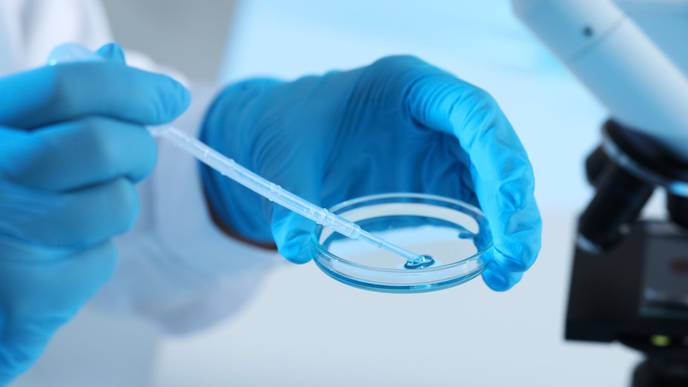The Way Bacteria Invade the Brain Offers a New Meningitis Treatment

04/10/2023
Bacteriologist taking a bacterial culture from a Petri dish. Image: Tim Sandle
Many different types of bacteria can cause meningitis (consequently there is no universal meningitis vaccine). The disease can lead to brain damage, paralysis, or stroke. In some cases, it can be fatal.
A new study has examined how bacteria invade the brain to cause meningitis. The research reveals that bacteria hijack the crosstalk between nerve and immune cells. The study from the Harvard Medical School was conducted in mice and it explored the processes by which bacteria hijack communication links between nerve and immune cells within the meninges (the protective layers that shield the brain from infection). The three-layered meninges exist as the final tissue barrier before pathogens enter the brain.
As well as exploiting the nerve cells in the meninges, the infectious agent goes on to suppress the immune response and this opens the way for the infection to spread into the brain.
According to the research, bacteria activate pain receptors and initiate a signalling cascade. This serves to disables immune cells and this culminates in bacterial invasion of the brain. Two bacteria were examined in the study: Streptococcus pneumoniae and Streptococcus agalactiae, both are leading causes of bacterial meningitis in humans.
Specifically, the researchers identified a neuroimmune axis at the protective borders of the brain that is hijacked by bacteria. This happens after bacteria release a toxin that activates pain neurons in the meninges.
There are two central players in this molecular chain of events that results in an infection. The first is a chemical released by nerve cells (called CGRP) and the second is an immune cell receptor blocked by the chemical.
The role of CGRP was confirmed by assessing levels of CGRP in meningeal tissue from infected mice with intact pain neurons and meningeal tissue from mice lacking pain neurons.
Once the chemical engages the receptor, the immune cell is effectively disabled. Under normal conditions, as soon as macrophages detect the presence of bacteria, they move to attack, destroy, and engulf them. Disabled, the macrophages do not function, and they are also unable to send signals to other immune cells to provide a second line of defence.
Current treatments include tackling the resultant brain-damaging inflammation with steroids. This carries a risk since the immunosuppressive drugs can further disable the human body’s defences.
The study could change this form of treatment. The significance of the research has been to identify a critical window during the early stages of bacterial invasion. Here, an intervention could halt the spread of infection. Furthermore, the study points to therapeutic pathways for new treatments of bacterial meningitis.
This is in relation to both the chemical released by nerve cells and the immune cell receptor, which are both exploited by bacteria for the infection, subsequent experiments show that blocking either one can interrupt the cascade and prevent the bacterial invasion.
Currently compounds that block CGRP are found in widely used drugs to treat migraine, a condition believed to originate in the top meningeal layer. The basis for a treatment might rest with already existing medications.
The research appears in the science journalNature, titled “Bacteria hijack a meningeal neuroimmune axis to facilitate brain invasion.”

Facebook Comments